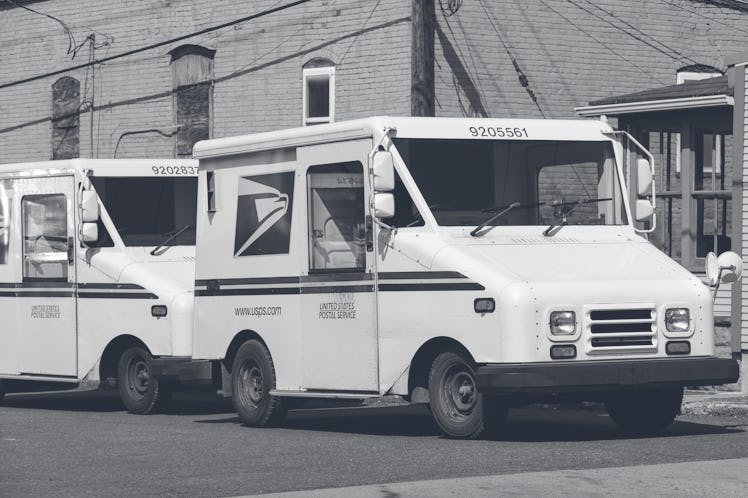USPS Will Begin Gas-Guzzling Fleet Replacement With 25,000 New Electric Vehicles
After backlash to an original plan to only replace 10% of its total fleet with electric vehicles, the U.S. Postal Service released a proposal in which 40% of its total fleet will be made up of electric vehicles.

The United States Postal Service (USPS) has announced new plans to begin replacing some of the 190,000 aging vehicles in its delivery fleet. The service previously planned to replace the aging delivery vehicles with largely gasoline-run ones, a move the Biden administration and climate experts pushed back against. Following this and other criticism, the USPS revised its plans — and will make more of its new fleet electric.
What Were The Old USPS Plans?
This February, the USPS announced its plan for replacing its aging fleet. At the time, the USPS said it would make just 10% of their next-generation fleet — a set of vehicles that are supposed to last a very long time — electric. For reference, these vehicles were supposed to replace a fleet that was initially purchased in the years between 1987 and 1995, per ABC News. To replace so many vehicles in the fleet with gasoline-powered cars rather than electric ones would lock the agency into using these gas-guzzling cars for decades at a critical time in the fight against global warming.
It makes sense that plan was met with immediate backlash — 16 states and a labor union filed suit against the USPS to stop the gas vehicle purchases. The Environmental Protection Agency (EPA), too, said the February plan “underestimates greenhouse gas emissions, fails to consider more environmentally protective feasible alternatives, and inadequately considers impacts on communities with environmental justice concerns."
Following the February announcement, the Biden administration urged the USPS to reconsider its $11.3 billion plan to lock the USPS into decades of further emissions. The USPS plan, after all, would directly inhibit the Biden administration’s goal to replace America’s 600,000-deep fleet of federal vehicles with electric ones — and make it way harder to slash carbon emissions and create cleaner air.
“The cleaner the Postal Service vehicles that are deployed in communities across the country, the more air quality and public health will be improved,” an EPA administrator said.
What Is The USPS Proposing Now?
The USPS ultimately revised its plan. The Postal Service announced that instead of making just 10% of its new fleet electric vehicles, it will now ensure that at least 40% of the new fleet is electric. It will also stagger purchases so the new cars aren’t all bought at once.
The first bulk purchase of 50,000 vehicles — of several bulk purchases to come — will ensure 50% of the cars bought are electric. According to Fortune, the plan is to have those vehicles on delivery routes by next year. Following that initial purchase, the USPS will purchase an additional 34,500 commercially available vehicles over the next two years.
The new proposal from the USPS pauses purchases — for now — at a total of 84,500 cars. The purchase caps are in place to ensure the vehicles can keep up with safety features as more electric vehicles are manufactured — so as the USPS continues to purchase new vehicles over time to replace the old fleet, they can be up to modern standards.
Although climate experts have applauded the move, they’re still warning that more needs to be done. "Ultimately, the entire postal fleet needs to be electrified to deliver clean air in every neighborhood in the country and avoid volatile gas prices," said Adrian Martinez, the senior attorney on Earthjustice's Right to Zero campaign.
And clean air matters: A study out of Boston College found that air pollution, even when it’s well within EPA acceptable levels, seriously affects the health of children and adults. So although the new plan from the USPS is far better than the old one, a more appropriate use of federal funds, and a better way to invest in the future, more needs to be done to ensure that kids can grow up with clean air.